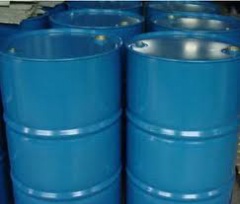Styrene monomer
| Infobox on Styrene monomer | |
|---|---|
| Example of Styrene monomer |  |
| Facts | |
| Origin | - |
| Stowage factor (in m3/t) | - |
| Humidity / moisture | - |
| Ventilation | - |
| Risk factors | See text |
Styrene monomer
Description
Styrene, also known as vinyl benzene, is an organic compound with the chemical formula C6H5CH=CH2. This derivative of benzene is a colourless oily liquid that evaporates easily and has a sweet smell, although high concentrations confer a less pleasant odour. Styrene is the precursor to polystyrene and several copolymers. Derivation is from ethylene and benzene in the presence of aluminium chloride to yield ethylbenzene, which is catalytically dehydrogenated at 630°C to form styrene.
Application
Use: Polystyrene; SBR, ABS, and SAN resins; protective coatings (Styrene-butadiene latex; alkyds); styrenated polyesters; rubber-modified polystyrene; copolymer resins; intermediate.
Shipment / Storage / Risk factors
Flammable, moderate fire risk, explosive limits in air 1,1-6,1%, must be inhibited during storage. Toxic by ingestion and inhalation. TLV: 50 ppm in air.
Vapours heavier than air and irritating to the eyes and mucous membranes. Subject to polymerization. If the polymerization takes place inside a closed container, the container may rupture violently. Less dense than water and insoluble in water.
| Melting point | -30°C |
| Flashpoint | 31,1°C |
| Boiling point | 145°C |
For overseas carriage consult the IMDG Code (International Maritime Dangerous Goods Code) and applicable MSDS sheet.











